Reading Comprehension Lesson Plan Objectives for 1st Grade
Kickoff grade is an exciting time of discovery for young readers. They are get-go to motion across letter/sound and printed/spoken discussion relationships to dig deeper into agreement what they are reading. Explicitly teaching reading comprehension strategies (like retelling, asking questions, making predictions, etc.) helps young children build the skills they demand. These showtime grade reading comprehension activities are a good place to start.
1. String upwards a retelling rope
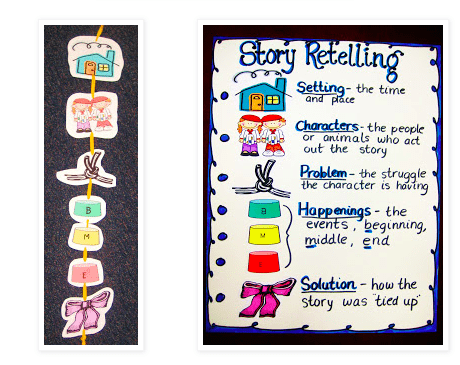
Learning how to retell a story helps young learners as readers and thinkers. It helps them organize their thoughts as they read and recognize when their thinking changes. Using these symbols representing different elements of a story, students can string up a cute retelling rope while gaining valuable comprehension skills.
Learn more: First Grade Wow
2. Visualize the story
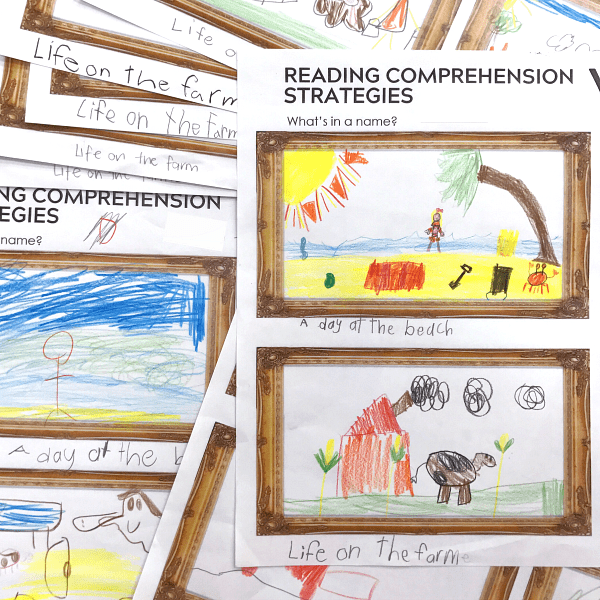
Visualizing is an important skill for understanding what you're reading. This weblog includes 2 fun visualizing activities. In the kickoff, students are given a title and are asked to draw an illustration that matches that title. In the second, students are given clues almost an object and are asked to depict the object the clues are hinting at.
Larn more than: You Clever Monkey
3. Make predictions
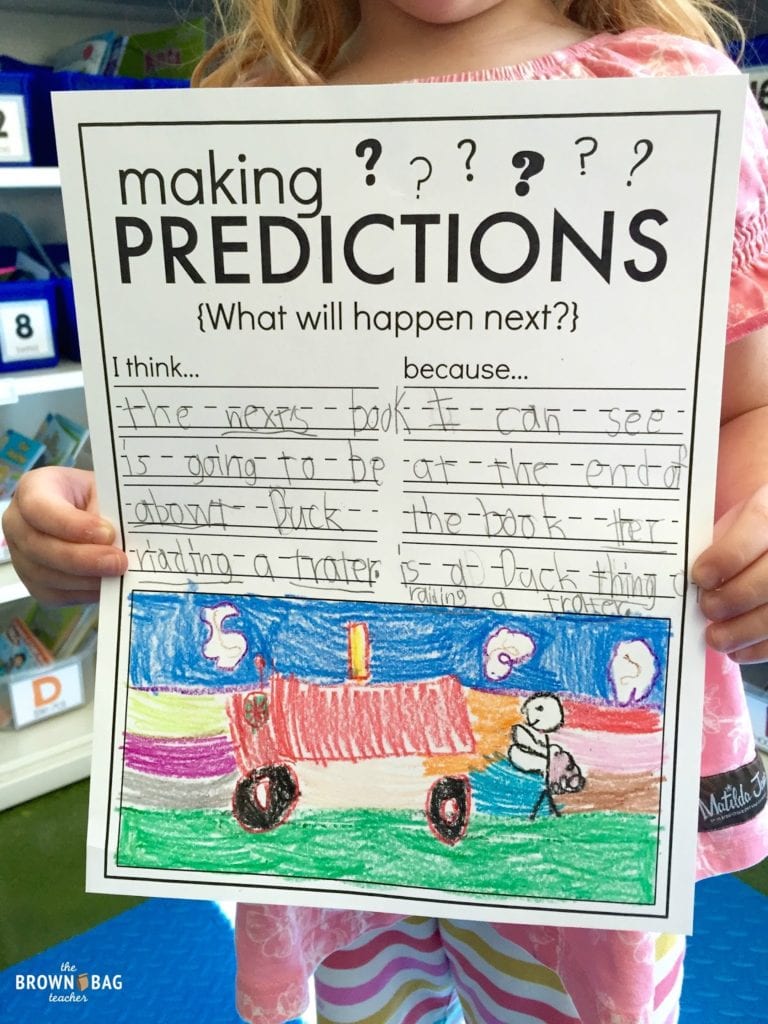
Making predictions is a just-right reading strategy for emerging readers. During a read aloud, detect a few good stopping points to enquire students what they think volition happen next.
Learn more: Brown Bag Teacher
four. Make a beginning, middle, and end flip chart
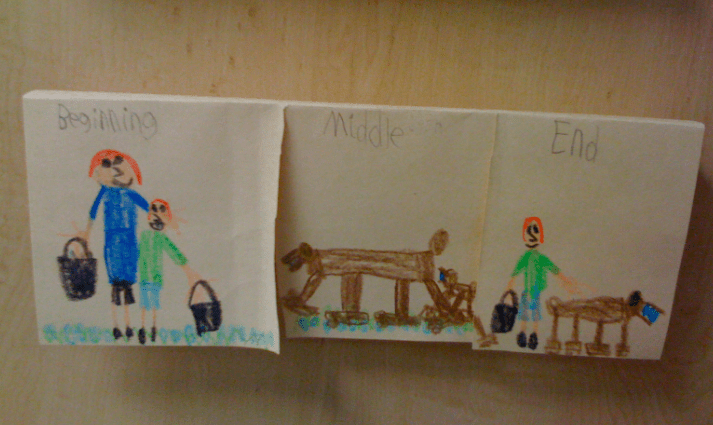
1 tried and true way to teach summarizing to early readers is didactics them to identify the beginning, middle, and cease of a story. This easy-to-brand flip chart is but an 8 ten xi piece of plain newspaper folded vertically then divided into thirds. On the front end half, students volition depict a picture of what happens in the three sections of the story. Underneath each flap is a brusque written clarification.
Learn more: Bishop's Blackboard
5. Ask questions
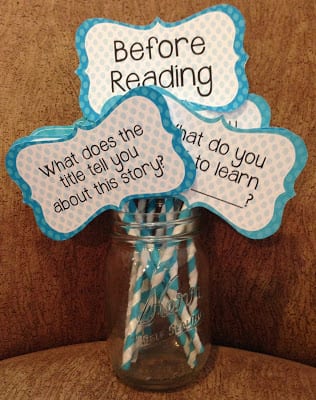
Good readers ask questions before, during, and afterward they read. These cute story sticks make a game of first class reading comprehension. Perfect to use with minor reading groups or with partners.
Learn more: The Happy Teacher
half dozen. Main the five finger retell
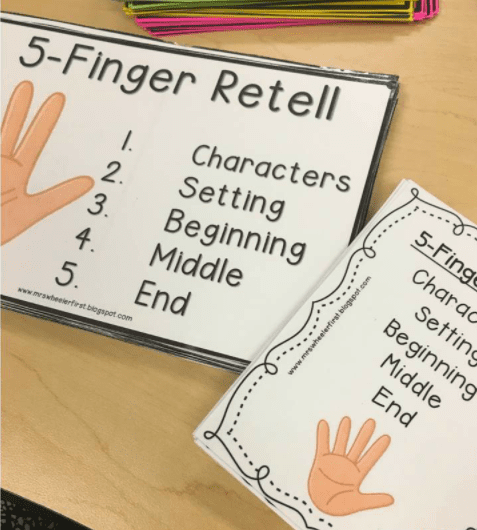
One strategy you tin can teach students is the v finger retell. Each finger stands for a different part of the story. Assigning a different finger for each part gives students a kinesthetic connection and makes it easier for them to call up.
Larn more than: Mrs. Wheeler'south First Form Tidbits
vii. Summarize using simple signal words
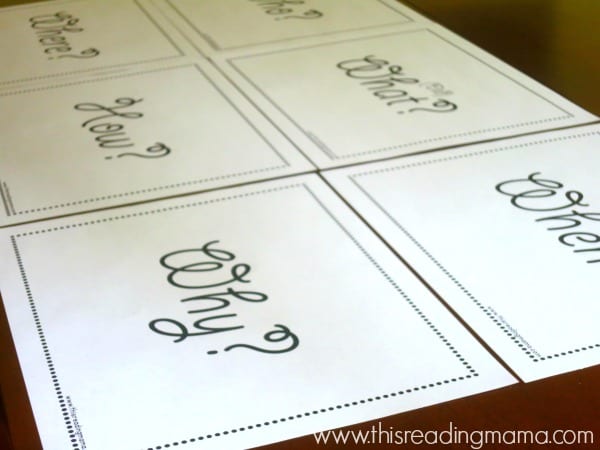
Sometimes, with early on readers, simpler is better. Start with these basic questions—who, what, when, where, how, and why—to help kids become deeper into their understanding.
Learn more: This Reading Mama
8. Practice with story maps
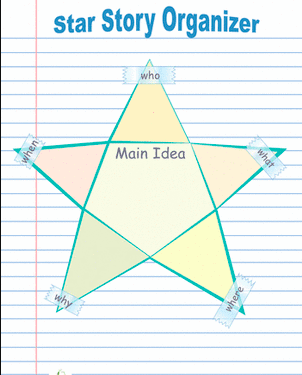
There are tons of fun tools to help students build reading comprehension, and story maps are one of them. Hither are 15 free downloadable story maps to assist your first graders practice going beyond merely the words when they read.
Learn more: Educational activity.com
9. Effigy out problem and solution
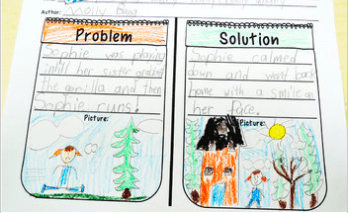
Every fiction story has, among other elements, a problem and solution. This lesson helps students empathise that a story's problem and solution fit together like pieces of a puzzle.
Acquire more: My Chief Paradise
10. Retell the story using LEGO bricks
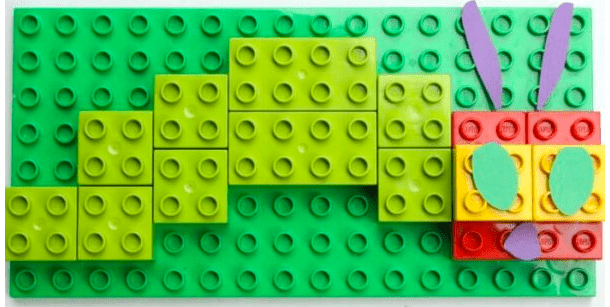
Put ii things that first graders love together- reading and building. Read a story together, then allow students to use blocks to build a scene from the story. As they build, they can describe details from the story.
Learn more: The Educators Spin On It
Reading and writing go hand in hand and atomic number 82 to greater overall comprehension. Check out these fun, printable starting time grade writing prompts.
Plus, become all the latest teaching tips and tricks past signing upward for our newsletters!
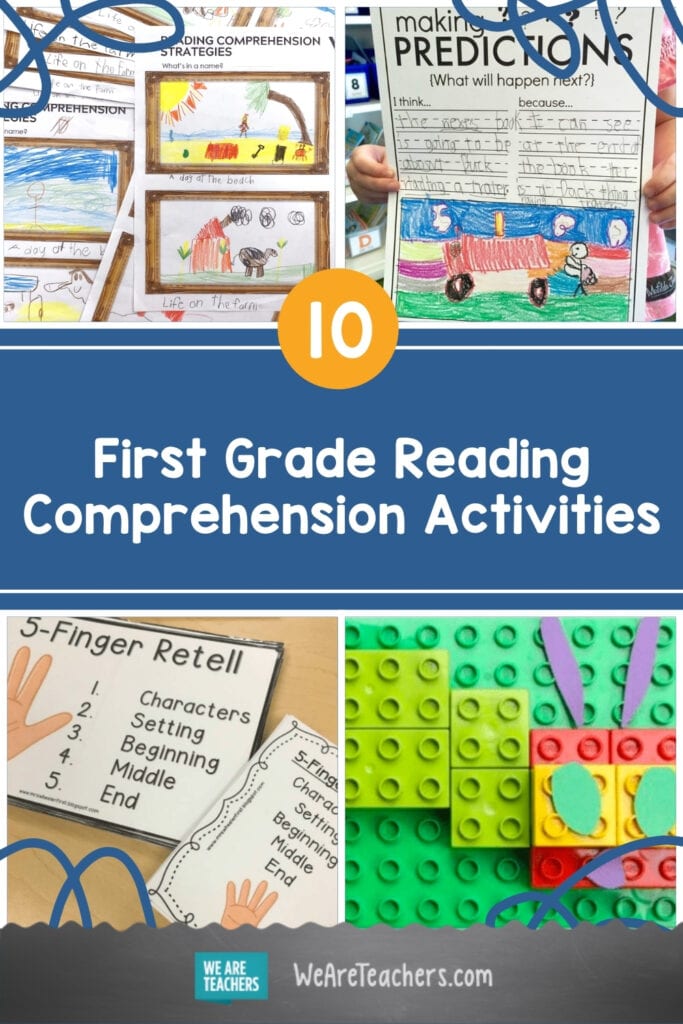
Source: https://www.weareteachers.com/first-grade-reading-comprehension/
0 Response to "Reading Comprehension Lesson Plan Objectives for 1st Grade"
Post a Comment